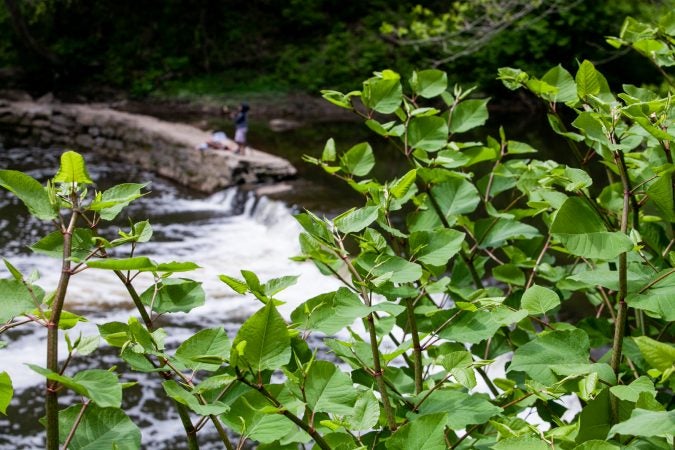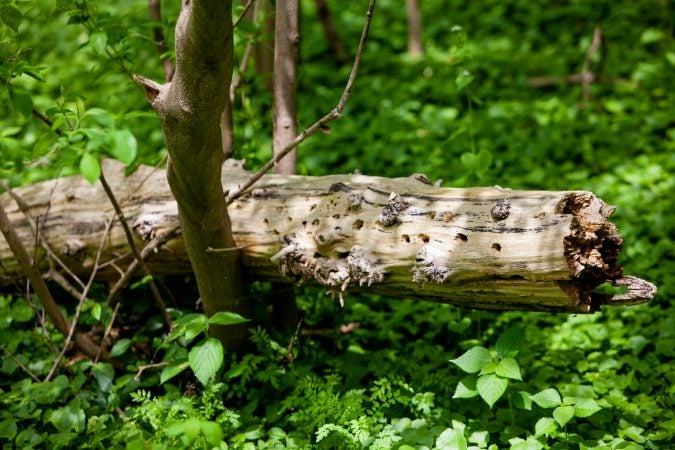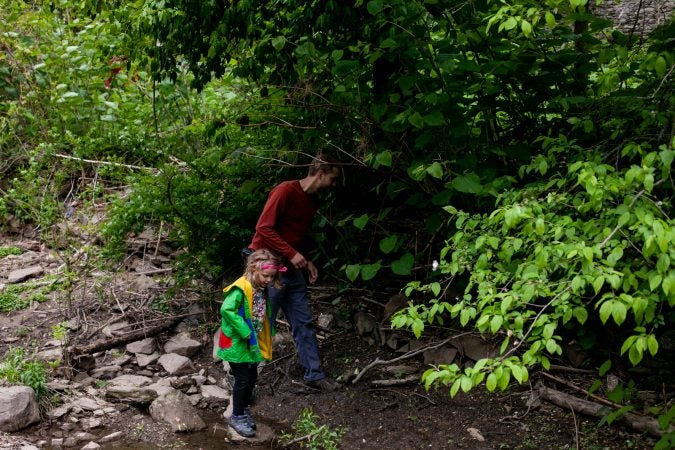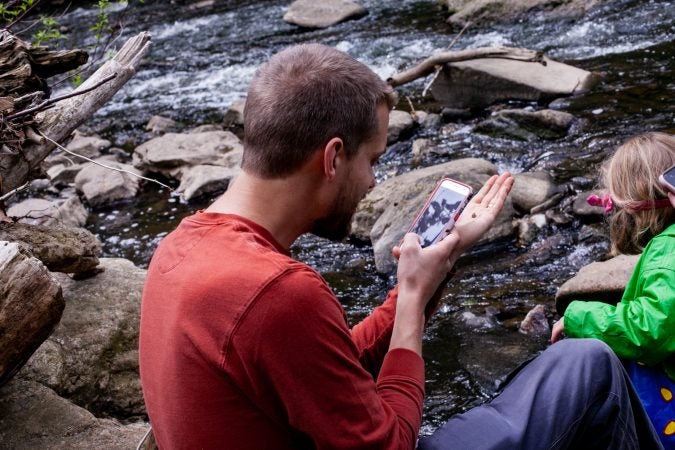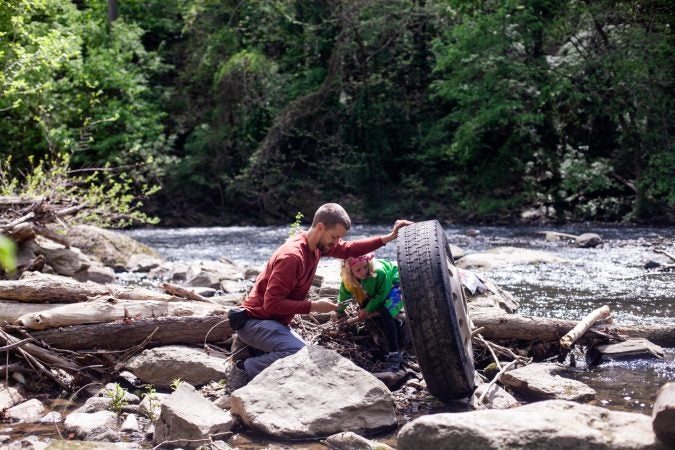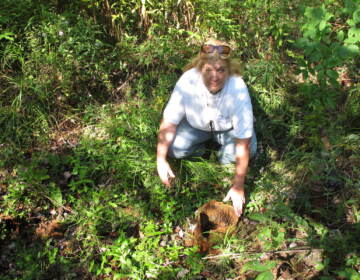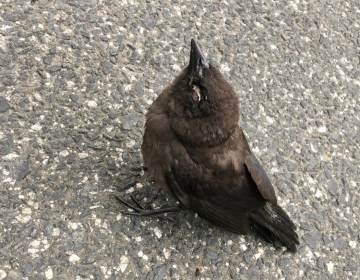From catbirds to butterflies: Here’s what Philly’s finding in its first City Nature Challenge
Monday is the final day of the City Nature Challenge. Philly is competing with 100 other world cities to find and record the greatest number of living things.
Listen 2:05-
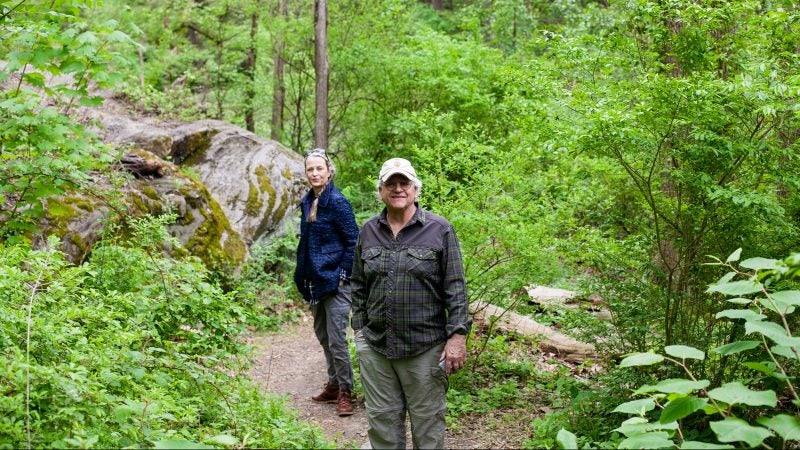
Craig Johnson of Interpret Green and Helena Van Fliet of Bio Philly are pictured in Wissahickon Valley Park during the City Nature Challenge Sunday. (Brad Larrison for WHYY)
-

Craig Johnson of Interpret Green and Sadie Francis of Bio Philly show WHYY reporter Ximena Conde wildlife in a small pond during the City Nature Challenge Sunday. (Brad Larrison for WHYY)
-
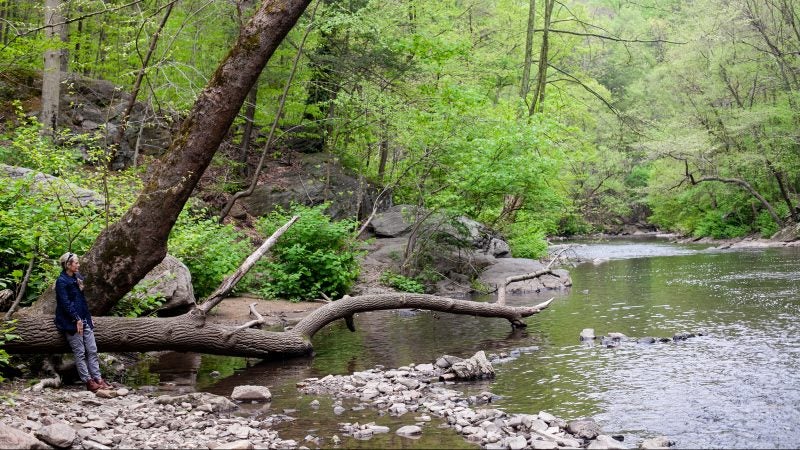
Helena Van Fliet stands by the Wissahickon Creek during the City Nature Challenge Sunday. (Brad Larrison for WHYY)
-

File photo: A Canada goose is pictured in the Wissahickon Creek. (Brad Larrison for WHYY)
-
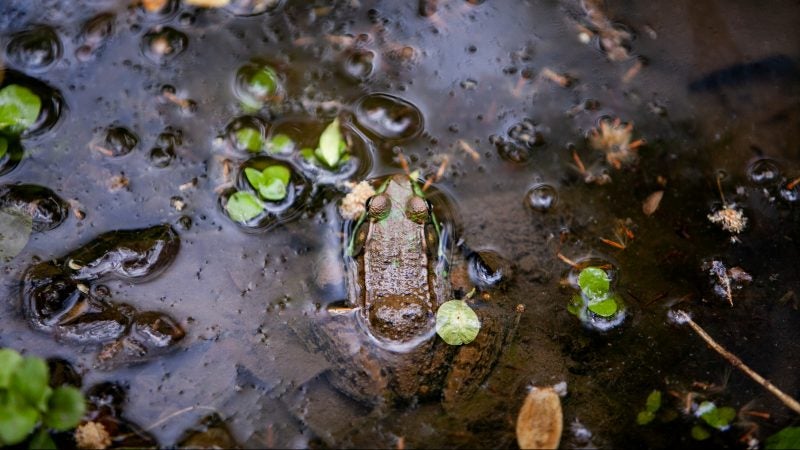
A green frog is seen in a small pond in Wissahickon Valley Park during the City Nature Challenge Sunday. (Brad Larrison for WHYY)
The Philadelphia region is going up against more than 100 cities across the world in a friendly, four-day competition to record the greatest number of living things, including plants, bugs, and birds.
The City Nature Challenge started on the West Coast in 2016 when the Natural History Museum of Los Angeles County and the California Academy of Sciences in San Francisco held a citizen scientist species-cataloging bonanza to play off an ongoing rivalry between the two cities. In 2018, cities across the U.S. hosted similar “bioblitz” events and last year, the City Nature Challenge went global.
Naturalists in Philadelphia and the surrounding counties in Pennsylvania and New Jersey jumped on board for the first time this year, hoping to bring attention to all the flora and fauna the region has to offer – from Red-winged Blackbirds to different species of fishing spiders. Check out the latest observations from the area here.
And of course, Philadelphia organizers hope to beat the reigning champions in the San Francisco Bay Area.
At walks and other guided cataloguing events throughout the weekend, participants hit Center City’s Rittenhouse Square, parks, nature preserves, and even a cemetery, armed with a mobile app called iNaturalist they used to document what they saw. If participants couldn’t identify something they spotted, someone else from the international community may be able to help using the app.
Four more events are planned for Monday, the fourth and final day of the first part of the challenge.
Part two begins on Tuesday and involves identifying what people found.
“It kind of democratizes nature observation,” said Bernard Brown who helped put together the Philadelphia region’s City Nature Challenge events.
“Someone with a row house or out in the suburbs, wherever they are, near their office, see a plant growing out of the sidewalk and they’re not sure what that is, or if they see a butterfly in their backyard, they can get a picture of it,” he said, and someone can help them learn what it is.
Brown said many people in the city might not have the means to get to “traditionally natural” places like the Grand Canyon or Yosemite National Park, but Philadelphia has its own abundance of plants and critters — for example, it boasts more than 325 recorded species of birds. Events like these make nature more accessible, said Brown.
“We’re hoping that people get excited and energized by the competition aspect of it,” he said.
As of Sunday evening, the region had logged more than 1,000 species with the help of 374 participants, and Philadelphia was 19th on this year’s leaderboard.
Doug Sponsler is a professional entomologist who studies bees and he’s been taking part in the challenge because he wants the city get to the top of the leaderboard. But it’s also a fun activity to do with his five-year old daughter Ellie.
“In this context, I’m very much an amateur,” said Sponsler. “The fact that I’m a professional entomologist does not help me very much at all where I’m mostly identifying plants and invertebrates that I’m not familiar with.”
For Ellie, the challenge is an opportunity to explore the Wissahickon Valley on Sunday.
“I like to look under rocks and look under bark, but sometimes I get distracted by climbing a tree,” Ellie said, right before taking off and climbing a tree.
Ellie and her dad spotted leeches, unknown tiny crustaceans, and a variety of plants.
WHYY is your source for fact-based, in-depth journalism and information. As a nonprofit organization, we rely on financial support from readers like you. Please give today.



